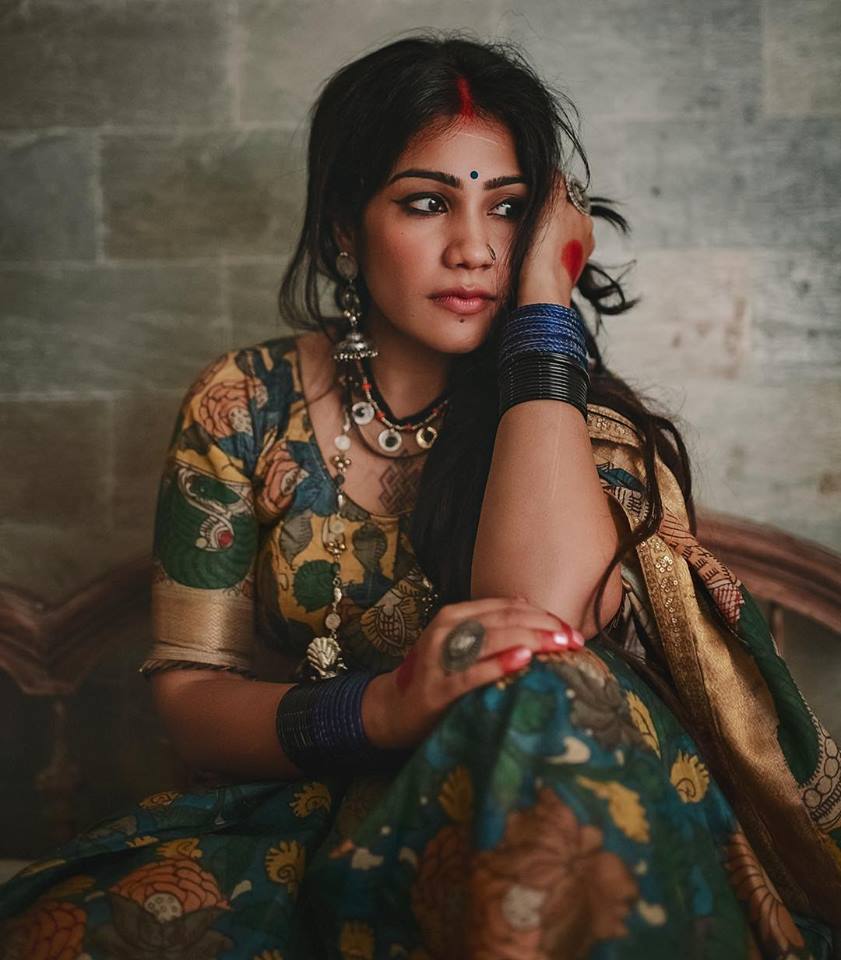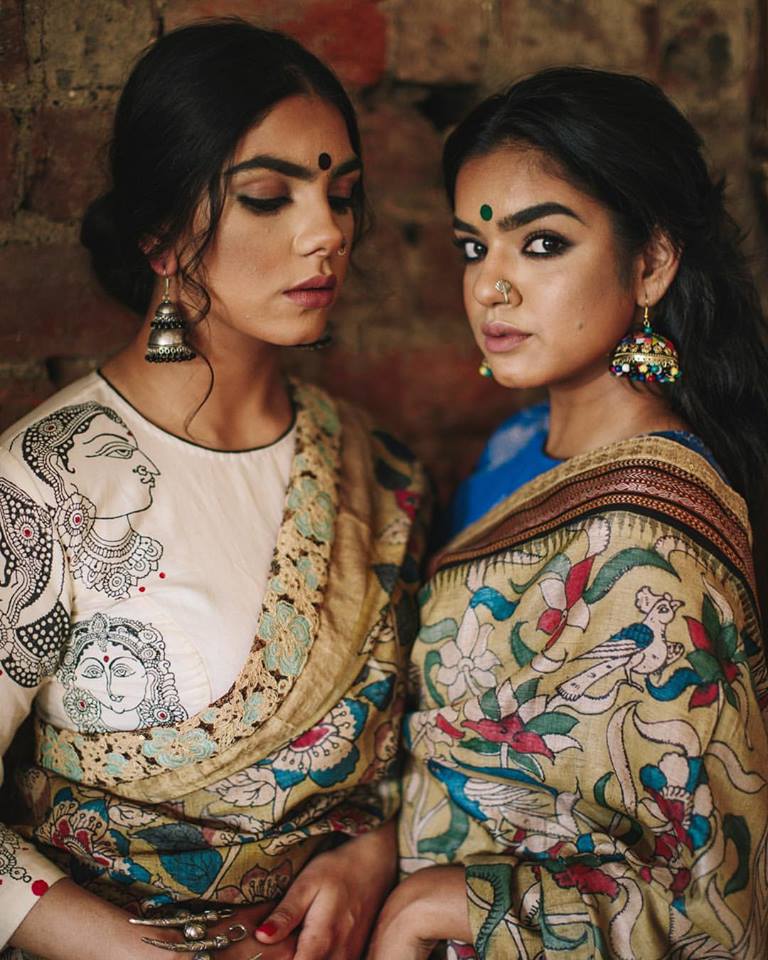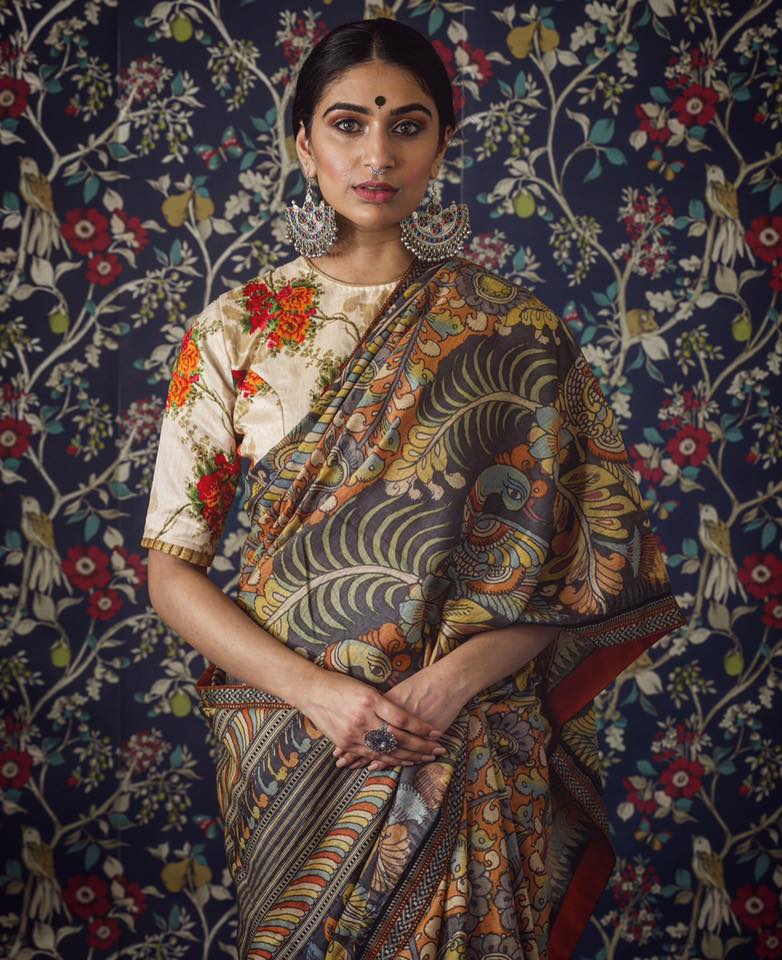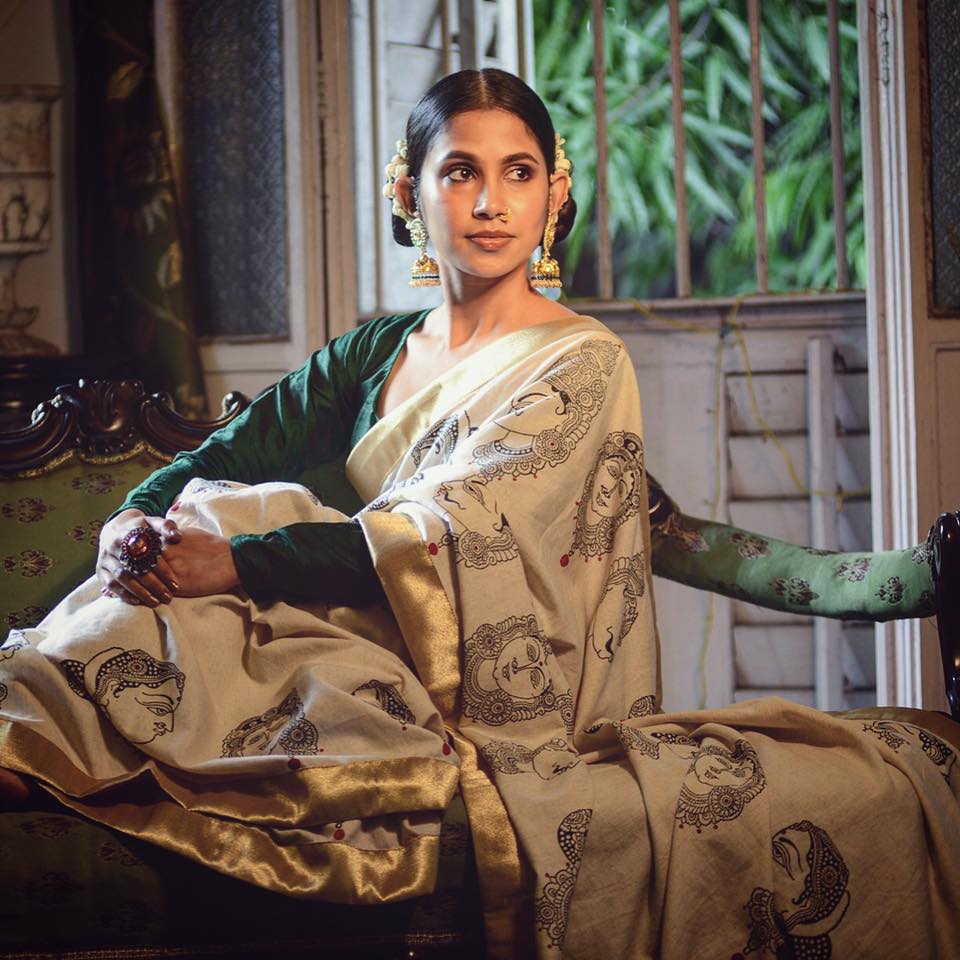Tales of Kalamkari
The earliest of Kalamkari presence can be traced to its use on a canvas, as a means to narrate and popularise the tales of mythological heroes by a group of artisans called Chitrakattis across several areas in course of their travels. However, in terms of exclusivity and style, the best of Kalamkari Art was produced at Srikalahasti (130 Kms. from Chennai), Masulipatnam (present-day-Machilipatnam-300 kms from Hyderabad) and Karuppur (Tanjavur). The popularity of the art-form, particularly at Srikalahasti can and still equally be attributed to its ideal weather conditions, widespread availability of dyes in addition to abundant natural resources, also in the form of the river Swarnamukhi, that flows through the Chittor district to merge into the Bay of Bengal. The use of milk for the treatment of cloth and the sketching using tamarind twigs as part of the complex 17-step procedure while making Kalamkari is still practiced.
Why is Kalamkari pen art so special ?Is it the designs, the dyeing process, or the natural dyes? We think it’s a combination of all these factors. Kalamkari is completely handmade and painted using a pen. Involving as many as 17 steps, traditional pen Kalamkari uses dyes made from natural materials. A slow, involved and vigorous process, making one Kalamkari cloth can take about 20 days! Each step in the process prepares the cloth for the next step, and hand painted and then treated for the next step. Experienced artisans are able to change the treatment depending on the colors and quality needed.
Is it the designs, the dyeing process, or the natural dyes? I think it’s a combination of all these factors. Kalamkari is completely handmade and painted using a pen. Involving as many as 17 steps, traditional pen Kalamkari uses dyes made from natural materials. A slow, involved and vigorous process, making one Kalamkari saree can take about 40 days! Each step in the process prepares the cloth for the next step. Experienced artisans are able to change the treatment depending on the colors and quality needed.– All tools and raw materials used in the production of Kalamkari are handmade and use natural materials.– The Kalam used to pant is a pen made of bamboo reed, with a cloth rolled over it and secured with cotton thread. Typically, there are 2 types of kalams: one for drawing outline and the other for filling colors.– Tamarind stems are burned and made into charcoal and used to make the black colour, specially used in the initial sketching– Chavala Kodi and surudu chekka help obtain the red and green shades– Pomegranate skin is used to obtain light yellow color– Katachu is boiled to obtain lighter brown colour– Blue is obtained from the Indigo plant-indigo tinctoria– Mangusta is used to obtain pink and red colours
The Fine Art of Kalamkari ❤
Once the fabric has been handpainted, cow dung is used for natural bleaching:Fresh Cow’s dung is mixed with water in a mud pot and mixed in alongwith the cloth. It is then squeezed loosely and kept flat to dry overnight. The day after , these pieces are taken to a natural water pond and each piece is beaten on a stone while washing. After that the pieces are spread on grass and water is sprayed on the cloth and flat dried once again for a couple of hours. In the evening, all the cloth pieces are collected from the pond, and the cloth is kept on the sand overnight. Next morning the beating and spreading process is repeated and after drying the cloth is ready for the next stage. The printed cloth is washed in flowing water in a big pond. The canal must have sand underneath the water, if not then the print will get smudged and the damage is irreversible. Canal washing needs a rope to hang the cloth pieces in water otherwise the cloth with float away with the flowing water. This process takes 2-4 hrs. You really have to see a Kalamkari saree being brought to life from start to finish, it’s one of the most beautiful things to witness.
Recommended Articles:


















